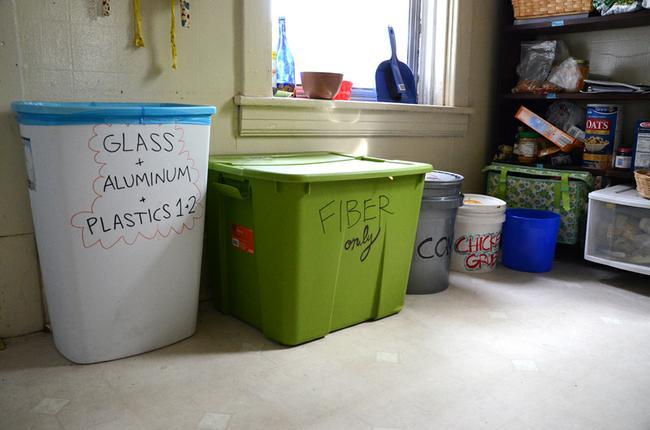Six MU students created an experimental sustainable living house on North College Avenue to teach the community about the benefits of living in an eco-friendly environment. They call it Sustainahouse.
Sustainahouse is a living experiment where the students reside together to practice leadership, build community and educate the public and student body on practical ways to reduce energy, water and waste in their homes, residence halls or apartments. To accomplish those goals, the group measures its weekly energy, water and waste, implements different conservation techniques and educates the public through workshops and publishing data on its webpage.
“We’re here to help you be sustainable,” senior co-project leader Claire Friedrichsen said in welcoming visitors at the group’s first biweekly community dinner.
The students plan to open their house to the public every two weeks for a potluck dinner. Sustainahouse residents said promoting community is one of their goals. Part of their mission is to provide a learning environment for others to observe life in a sustainable house and teach students that they can live successfully in a rented, environmentally friendly house.
Friedrichsen resides in the house with senior Li Tang, junior Sally Waldman, junior Monica Everett and sophomores Henry Hellmuth and Sustain Mizzou president Kat Seal.
The house is located on North College Avenue and has six bedrooms, two kitchens, two living rooms and a dining room. There are wooden floors throughout and new appliances in the kitchen. The residents wanted to show that students could rent any house and make it sustainable by fulfilling their own set of environmentally friendly goals.
The students live with no air conditioning, do not use a dishwasher, own two chickens that produce fresh eggs and have clotheslines to eliminate the use of a dryer.
“We are hoping to prove it possible and cheaper to live in a sustainable house,” Hellmuth said. “We decided it would be a great idea and we did it.”
Their first task was figuring out how to get all the windows open because of the house’s old age. In cases of extreme heat, the students spend most of their time in the basement, opening the windows only at night. During winter, thermal curtains will cover the windows.
“We want to show students how to live sustainably in a rented house,” Hellmuth said. “It’s just a matter of getting used to it.”
The house features an energy-monitoring device that communicates wirelessly with a computer and shows live energy readings. Hellmuth said, for example, if the refrigerator kicks in, the reading might move up a kilowatt.
Sustain Mizzou helped purchase the monitoring device. Anyone with a sustainability idea can apply for a grant through the organization and, if it approves of the proposed plan, the organization will help put the plan into action, Hellmuth said.
Each resident has a set of responsibilities that include waste and recycling management, web mastering, public relations directing and education and food coordinating.
The residents said they strive to live in a more environmentally conscious manner and want to become active members of the MU community. Being in charge of a house responsibility gives each student the chance to develop and lead his or her own sustainable project within the household, the residents also said.
The house members have weekly meetings because they are still in the process of figuring everything out, Seal said.
“Anyone can do it,” Seal said. “Students can live normally in a sustainable environment. You don’t have to be weird to do these things.”








